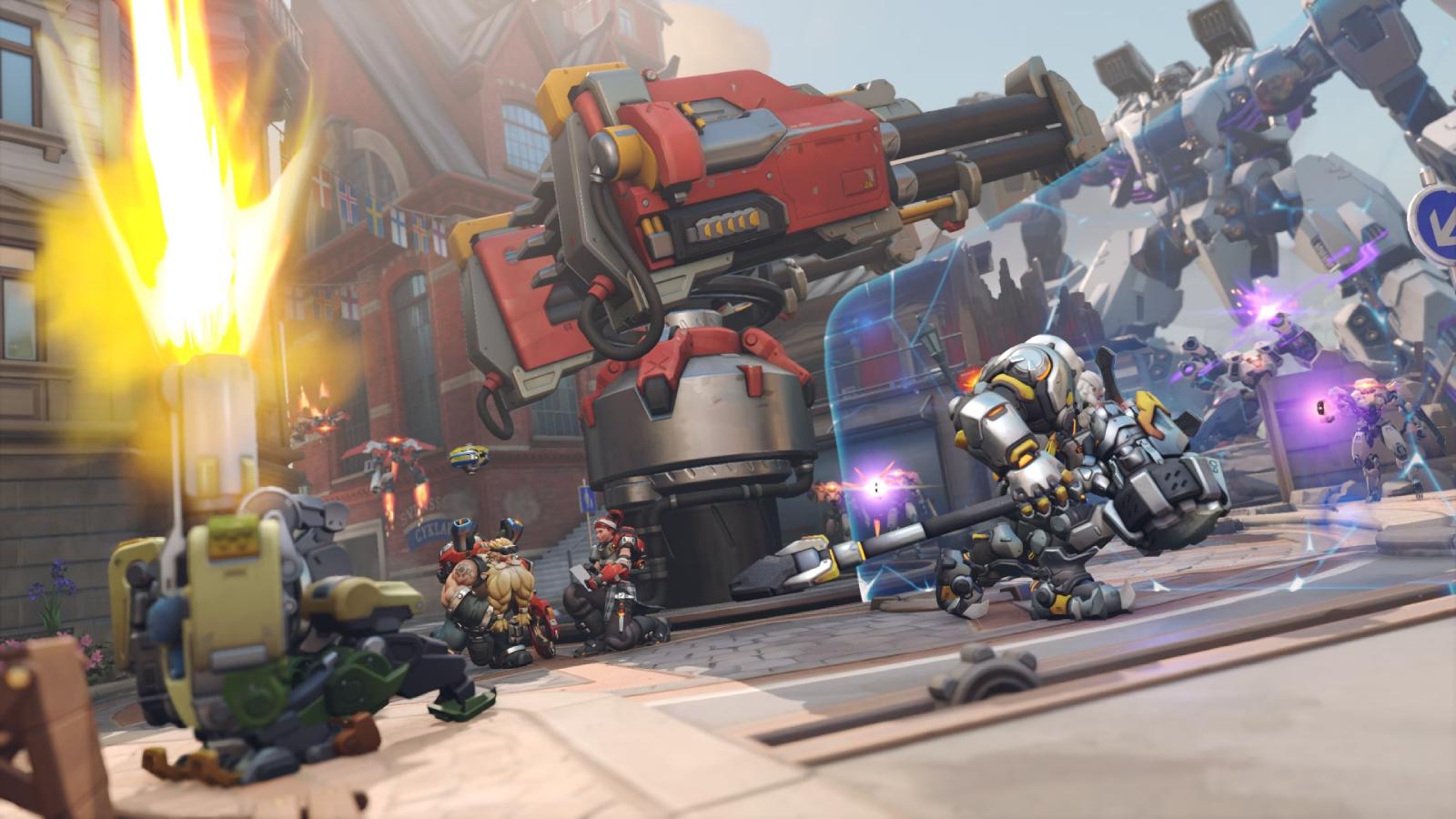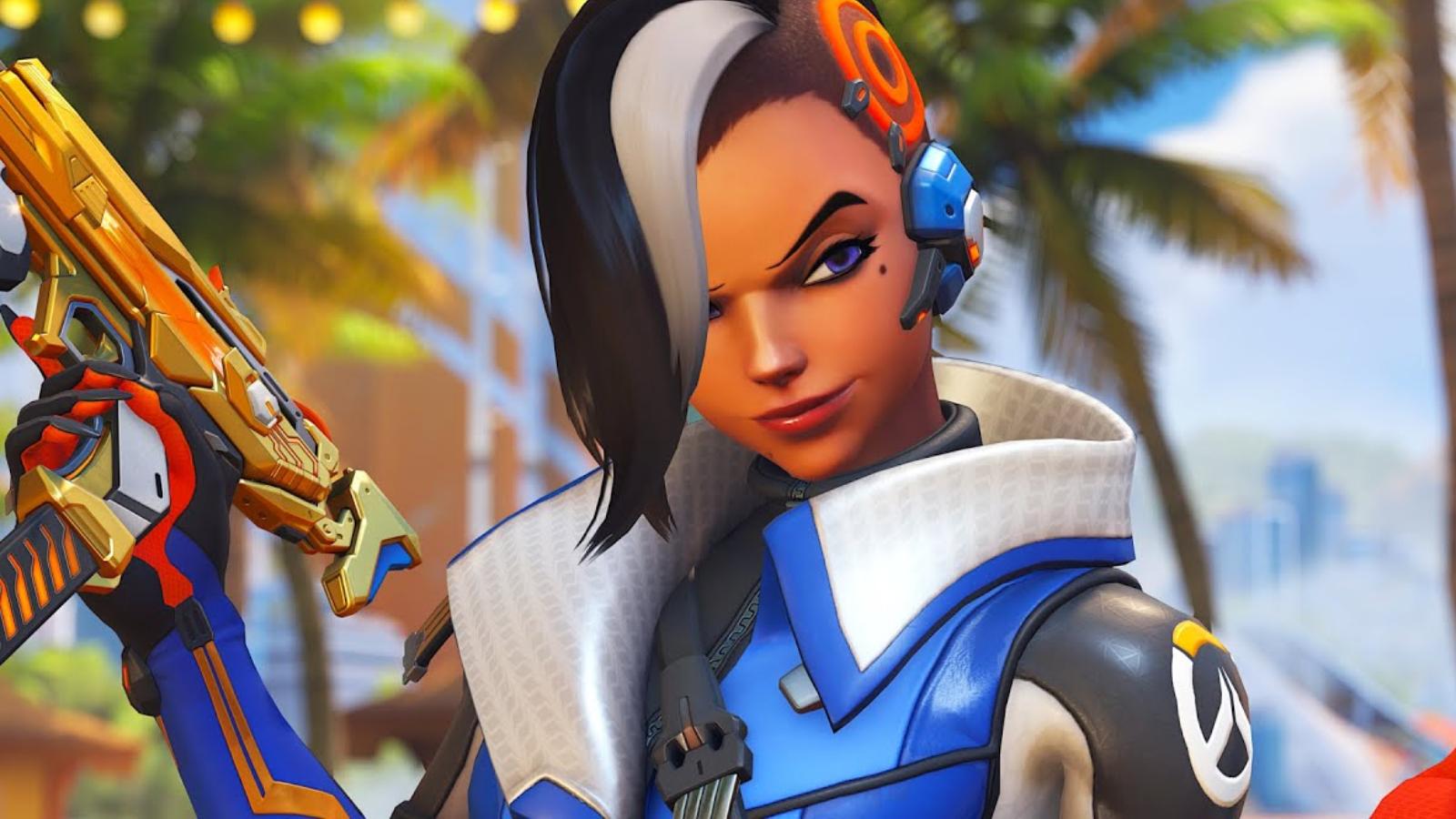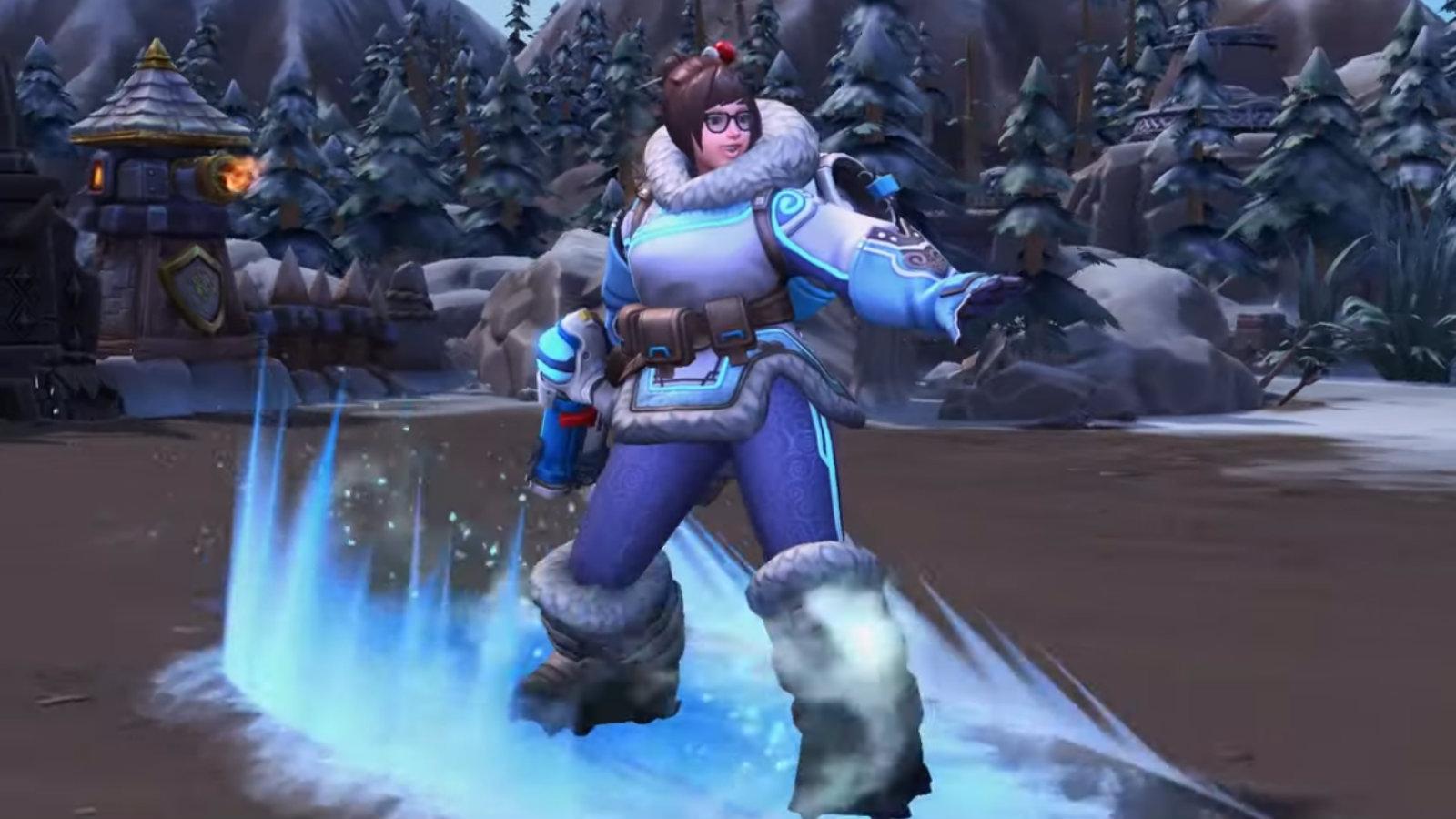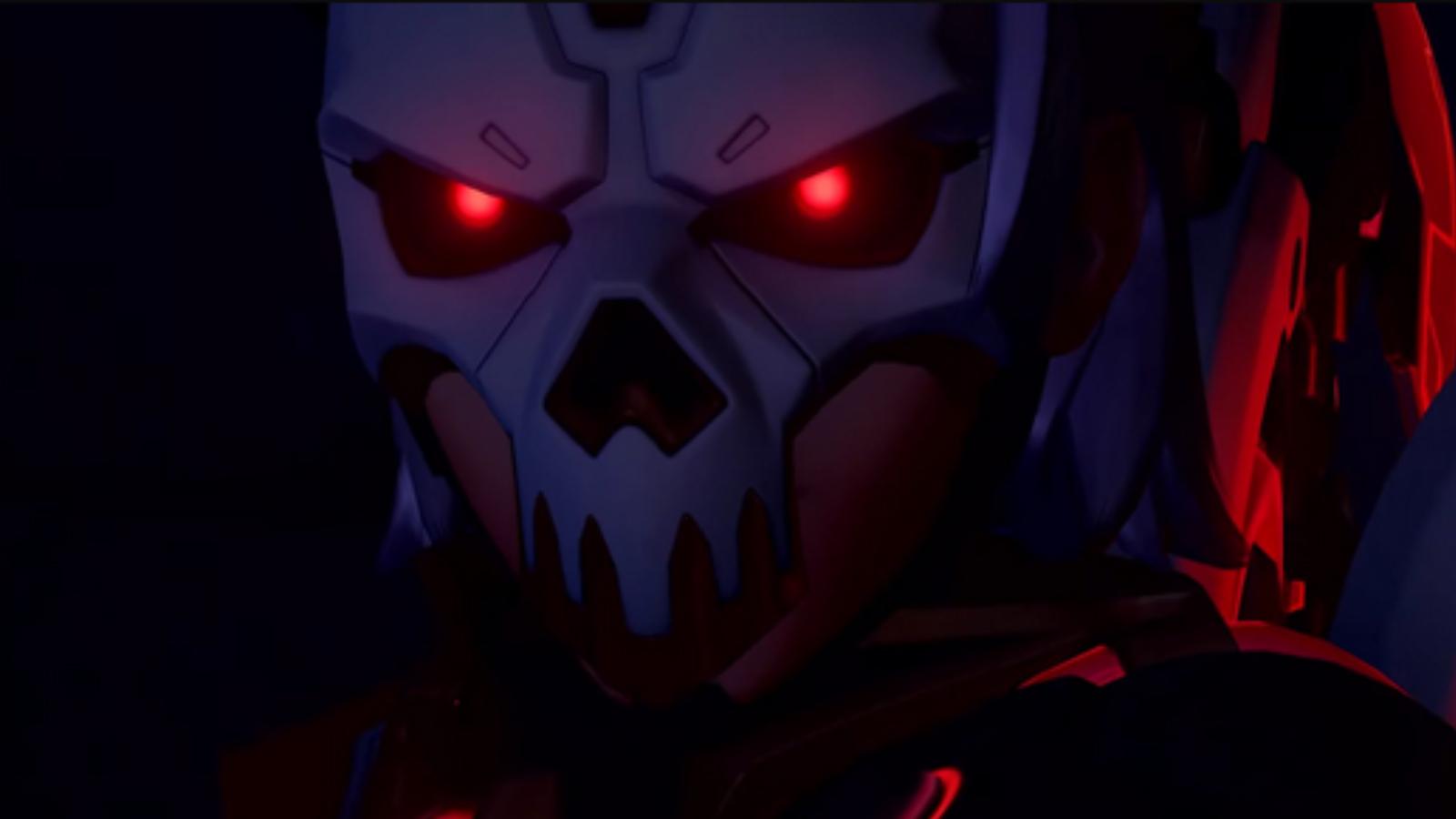An ode to the original: The greatest moments of Overwatch 1
 Activision Blizzard
Activision BlizzardOverwatch has had some truly amazing moments in its lifespan, so before we all fully move on to Overwatch 2, let’s look back at how we got here.
Debuting in 2016, Activision Blizzard’s hero shooter captured the hearts of many and become an instant international FPS success.
From its launch, the game’s esport quickly took off. This began with OGN Apex and the Overwatch World Cup (OWWC) and turned into the Overwatch League (OWL) and Contenders system we now know today.
Throughout that time, metas have shifted, the rules have fundamentally changed, superstars were born, and an entire community rallied around a group of hodgepodge heroes.
Now, in celebration of the legacy that Overwatch is leaving behind, here is a look back at some of its most magical moments.
#10: USA vs South Korea in the 2017 OWWC
This is a personal one for me, as this is where my Overwatch esports fandom really took off. As a huge soccer fan, the Overwatch World Cup resonated with me and had me feeling the same, rare nationalistic pride for the US team as I feel during the FIFA World Cup. I was hooked.
This was a classic rematch of the East vs the West, battling it out to see what region was going to take the lead in the early stages of OW esports.
Legends were born in this tournament. Yeon-oh ‘Fl0w3R’ Hwang and Jong-ryeol ‘Saebyeolbe’ Park had massive showings for South Korea, while Jacob ‘JAKE’ Lyon and company put themselves on the competitive map for the USA. 11 of the 12 players in this match eventually went on to play in the OWL, with the exception of the American Support Adam ‘Adam’ Eckel.
The series eventually went the way of the South Koreans, winning 4-2. This was an important chapter in the rivalry that would brew between these two nations which eventually led to their most recent international face-off in the 2019 OWWC. The red, white, and blue took that series 3-1.
#9: The Reaper “Beyblade” meta
This meta circulated very early on in the game, becoming popular in the latter parts of 2016. This was back when Reaper pumped out even more damage than he does now, somehow.
The idea was very simple… Use Reaper’s ultimate, Death Blossom, and have an ally Ana Nano Boost him right as he uses it. It was called the “Beyblade” meta because this is back when Ana’s ultimate increased the target’s speed along with damage.
It made Reaper a spinning wheel of death, much like a Beyblade, and able to cover some serious ground. People even started pairing this with Lucio’s Speed Boost, making Reaper even more able to spread his destruction.
Beyblade was a fun meta that encouraged synergy, timing, and coordination. The results were often frustrating for the opposition but were a blast for those pulling it off.
#8: Addition of Game Browser and Worskhop to the Overwatch client
This was added all the way back in early 2017 and has since come to be a great, community-focused aspect of Overwatch.
Once just a platform to set up private, custom matches, this has sense been expanded to include the Workshop, where the community can create and play their own custom game modes.
This has led to some wacky modes being created and, perhaps most importantly, gave players something fun to do while waiting in those long DPS queue times.
Things like this help the community to feel like their voices are heard and that they are a part of the development of the game. This was a key part of Overwatch’s development over the years.
#7: The 2019 Battle for Texas: Overwatch League
Battle for Texas is the matchup in the OWL between the Houston Outlaws and the Dallas Fuel. It was one of the rivalries that the league hoped would take off in its first year and it did.
The 2019 matchup was the OWL’s first homestand. A realization of the dream’s the league had for itself and the first step in making it a reality. And this was the center of it all.
The series itself delivered. The arena shook at the booing that rang out, the match was close, and Dallas took it home in front of their home crowd.
For the OWL’s development, the importance of this match can not be undersold.
#6: The LA Gladiators “Great Bamboozle” play
This is arguably the greatest play to happen in the OWL, demonstrating insane levels of creativity and teamwork from the side of the Los Angeles Gladiators.
If you’ve been a fan of the league for any time at all, you’ve likely seen this appear on one highlight reel after another, and for good reason.
Basically, the Gladiators make a quick and extremely long flank around King’s Row in order to get high ground. Moving in such a pack, the Spitfire isn’t able to see that one player in the squad is missing.
Queue up Lane ‘Surefour’ Roberts. Staying in spawn, remaining on a hero they would expect, he switches to Widowmaker just as his team dives in, catching the Spitfire completely off-guard and immediately netting two key kills. The cast still gives me chills.
#5: The first Overwatch Halloween Terror seasonal event
 Activision Blizzard
Activision BlizzardThis seasonal game mode debuted all the way back in October of 2016 as was originally called “Halloween Brawl.”
What makes the Halloween event stand out is the unique wave-clearing PvE mode that was added. For the first time playing the game, players had a totally unique playing experience that allowed them to do more than just 6v6. And, it was fun.
This inaugural event also brought some great skins with it, like Dr. Junkenstein (Junkrat) and Junkenstein’s Monster (Roadhog).
All-in-all, this was an important step for Overwatch developing the possibility of what could be for PvE within the game.
#4: The 2018 OWL Grand Finals opening at the Barclays Center
The 2018 Grand Finals was the true first step towards the OWL being validated as an esport.
Filling up the 19,000 seat-capacity Barclays Center in Brooklyn with OWL fans, the event kicked off with an unreal amount of hype. The intro video announcing the two teams and Alex ‘Goldenboy’ Mendez taking the stage still gives me goosebumps.
This was also, very notably, the league’s first Grand Finals, pitting the unpredictable Philadelphia Fusion against the powerhouse of the London Spitfire.
The series delivered some amazing moments, and the $1 million prize purse eventually went over to the Spitfire, who claimed the series 2-0 (3-1 & 3-0).
#3: Addition of Lucioball in Summer Games event
 Activision Blizzard
Activision BlizzardAnother amazing seasonal event, the Summer Games always deliver. One of the main reasons I’d argue that’s the case is because of Overwatch’s most creative, and most fun, seasonal mode – Lucioball.
Overwatch’s take on Rocket League, Lucioball is typically played 3v3 and features a giant soccer ball that both teams are attempting to score using Lucio’s secondary fire.
I played hours of this mode each season. Why? Because it was a break from the norm and a way to enjoy Overwatch in a whole new way.
This takes such a high spot on the list because of its importance in Overwatch’s yearly event cycle and how groundbreaking it was when it first arrived in-game. Plus, it’s just a ton of fun.
#2: Competitive Season 1 & hero limits
The days before the first competitive season in Overwatch were truly the Wild West, with players on the same team able to play the same heroes as one another.
This may sound ridiculous for some and might be a distant memory scratched from one’s subconscious for others, but this was a true turning point in the direction of Overwatch.
Before this, comps like two Winstons, two Lucios, and two Tracers were unbeatable on Control maps, and it wouldn’t be uncommon to run into five D.Vas stalling out a point.
But Overwatch’s Competitive Season 1 tested out a limiter, forcing players on the same team to play different heroes than one another, and the rest is history. Well, until the next big change, that is.
#1: The introduction of Role Queue & the end of the GOATS era
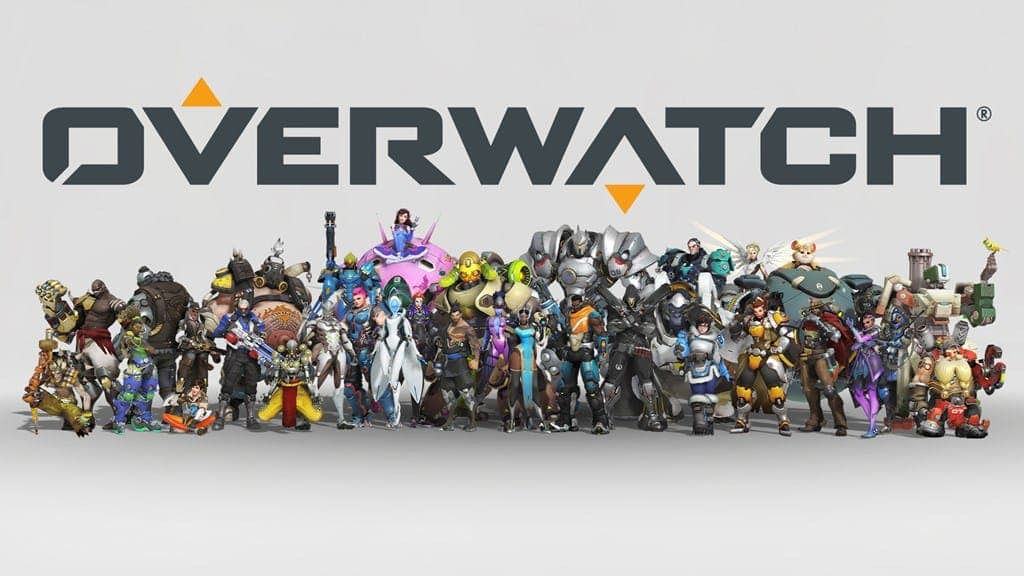 Activision Blizzard
Activision BlizzardRole Queue, otherwise known as Role Lock, was the single biggest addition to the game in Overwatch’s history – and its most important.
This change came as an oasis in the GOATS-filled desert and addressed the “everyone pick DPS as soon as you queue” experience in ranked play. For many, OW was getting to the point of being unplayable and extremely frustrating, and Role Queue addressed the problem perfectly.
It fundamentally changed how team compositions were able to be built, how we played the game, and how we watched the esport. For all intents and purposes, this is really the kind of shift that should have happened in Overwatch 2, not Overwatch 1.
Without the dev team stepping in and making this tweak, who knows where the game would be now. It helped the game continue to survive these five-plus years later and will continue to shape how the game is played in OW2.
Honorable mention: The Shanghai Dragons journey
This is less of a moment and more of a movement, but scalping it from the list felt almost criminal. So, it becomes an honorable mention.
The Shanghai Dragons hold the record for most consecutive losses in a professional sport or esport, losing 42 games in a row including an 0-40 season in 2018.
The Dragons’ first win in 2019 was historic and shook the OWL fanbase to its core, as you can see in the video above. The team finally got over the hump and started winning. Then, after a roster overhaul, become champions in 2021.
It’s hard to put into words how bad Shanghai was in 2018, especially when you consider how dominant they were in 2021. This epic journey is what it’s all about is arguably the greatest turnaround in esports history.
For me, Overwatch’s best moments are the ones that helped it pave the way on the road to being its best self. Overwatch is a game with unreal amounts of potential yet to be realized in its sequel, and I’ll be as excited as anyone else to play it. But, it’s always important to know where you came from, and for Overwatch, it’s been a long a bumpy road filled with trials, tribulations, and triumph.
I’ve loved growing with this game and its esport throughout the years, I hope you have too.
